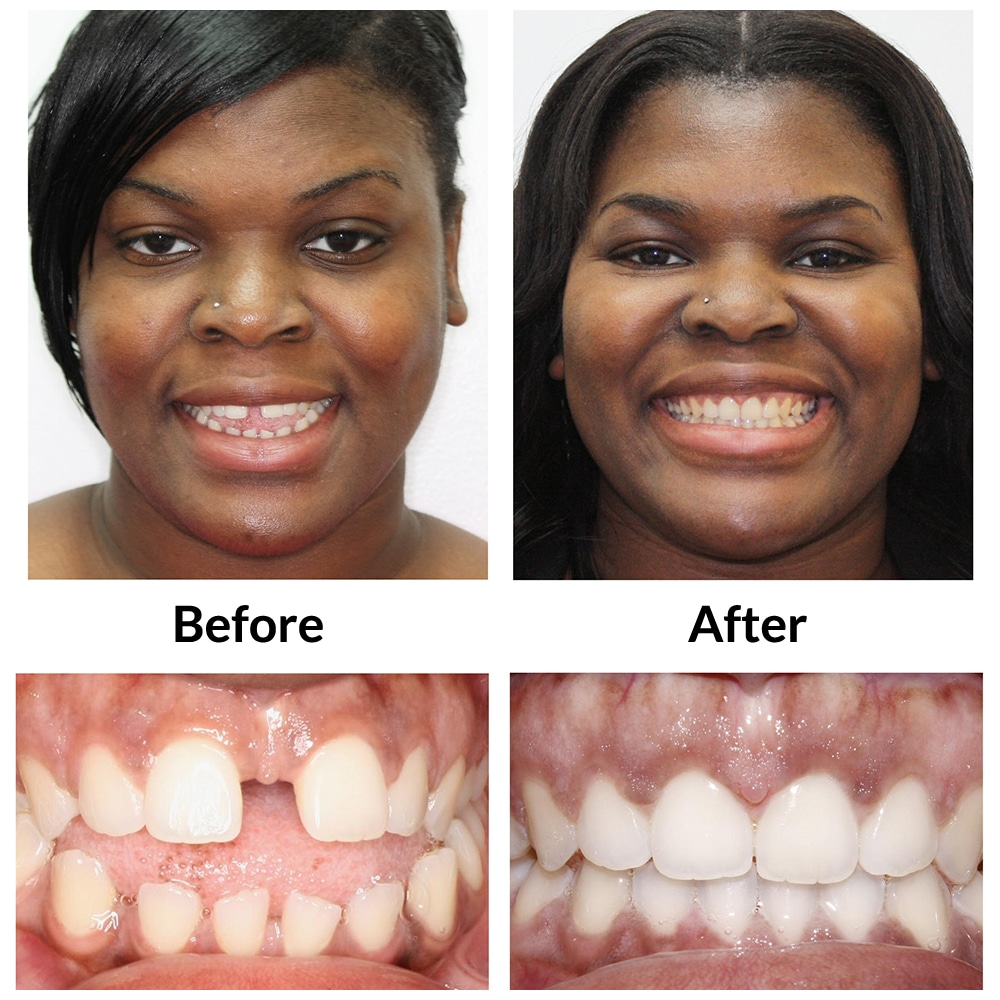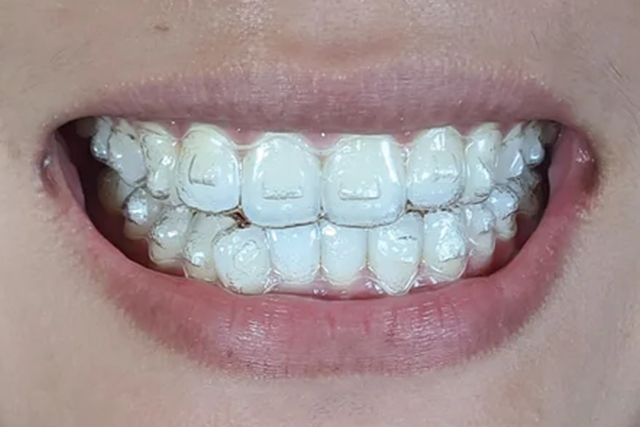Invisalign for Teenagers: A Modern Solution to Straightening Young Smiles
Invisalign for Teenagers: A Modern Solution to Straightening Young Smiles
Blog Article
Invisalign vs. Conventional Braces: Which Option Is Right for You?
When thinking about orthodontic therapy, the option in between Invisalign and conventional braces provides numerous important variables that warrant cautious analysis. Invisalign supplies a very discreet alternative with detachable aligners, while conventional dental braces supply a much more visible yet reliable remedy for extreme misalignment. Each alternative includes distinctive benefits and drawbacks connected to aesthetics, comfort, treatment duration, and cost. Recognizing these subtleties is critical for making an informed choice that aligns with your individual choices and way of living. The concern stays: which option will best satisfy your orthodontic needs and expectations?
Overview of Treatment Options

On the other hand, traditional braces contain steel brackets and wires that are bound to the teeth. This technique applies continual stress over time to attain alignment. While efficient for complex orthodontic issues, traditional braces require regular visits for modifications and can position obstacles in keeping dental hygiene due to the problem of cleaning up around braces and cables.
Both alternatives have their merits, and the choice typically depends upon details oral problems, way of living preferences, and patient conformity. Inevitably, consulting an orthodontic specialist is crucial for establishing one of the most ideal treatment strategy customized to private requirements. Recognizing the nuances of each choice can dramatically affect the overall success of orthodontic therapy.
Visual Factors To Consider
A substantial factor affecting the option in between Invisalign and conventional braces is the aesthetic appeal each therapy provides. Invisalign aligners are crafted from clear plastic, making them essentially unnoticeable when worn.
On the other hand, traditional dental braces are composed of metal braces and cords, which can be extra obvious. While innovations in orthodontic technology have actually brought about the advancement of smaller brackets and tinted elastics, standard braces still maintain a more noticeable profile. For some individuals, the presence of dental braces may discourage them from looking for required treatment.
Eventually, the selection between Invisalign and conventional braces might pivot on personal choices regarding aesthetic appeals. Individuals that focus on discernment typically lean toward Invisalign, while those that are much less concerned concerning presence may go with standard braces. Understanding the aesthetic effects of each option is important for making an informed choice that lines up with one's way of life and preferences.
Comfort and Convenience

In terms of convenience, Invisalign aligners are detachable, enabling individuals to appreciate their favorite foods without constraint and keep ideal dental health. Cleaning and flossing are streamlined, as the aligners can be taken out during these routines, whereas typical braces call for careful navigating around cords and brackets.
In contrast, typical braces demand regular changes, making them less convenient for those with active schedules. In general, the comfort and convenience of Invisalign make it an attractive choice for many people seeking orthodontic therapy.
Therapy Period and Efficiency
While both Invisalign and traditional braces work in dealing with oral misalignments, the duration of treatment can differ significantly in between the 2 options. Generally, Invisalign therapy can take anywhere from 12 to 18 months, depending upon the intricacy of the case. The clear aligners work by slowly shifting teeth into their wanted settings, and routine follow-ups with an orthodontist aid ensure progress remains on track.
In comparison, typical braces often need a longer dedication, typically varying from 18 months to three years. This results from their fixed nature and using cords and braces, which can be extra reliable for extreme imbalances and complex cases (Invisalign). The treatment performance of standard dental braces is well-documented, as they permit precise modifications and greater control over tooth motion
Eventually, the selection between Invisalign and conventional dental braces might depend upon both the expected treatment period i was reading this and the specific oral issues available. Consulting with an orthodontist is vital, as they can supply customized suggestions based upon individual requirements, making certain the chosen technique lines up with preferred results and durations.
Expense Contrast and Insurance Options
Cost plays a significant role in the decision-making procedure for people thinking about orthodontic treatment, whether choosing for Invisalign or traditional dental braces. On standard, the cost of Invisalign varieties from $3,000 to $8,000, while conventional dental braces generally set you back in between $2,000 and $6,000. Elements affecting these expenses consist of the intricacy of the situation, the period of treatment, and geographical place.
Many dental insurance coverage plans provide click this link partial protection for orthodontic treatments, but the specifics can vary widely. Generally, typical dental braces may be a lot more often covered by insurance coverage plans contrasted to Invisalign, which some insurance companies classify as an aesthetic procedure.
Additionally, several orthodontic methods supply adaptable layaway plan, making both treatment options much more accessible. Individuals must ask about possible funding alternatives and discounts for ahead of time settlements. Examining the overall expense, consisting of insurance coverage advantages and payment strategies, is essential for making a notified decision that straightens with both visual preferences and budget considerations.

Conclusion
In summary, the option between Invisalign and conventional braces pivots on multiple factors, consisting of aesthetic preferences, comfort, therapy duration, and cost. Invisalign offers a very discreet, detachable alternative that assists in dental health and dietary flexibility, while conventional braces may be better for complicated oral issues and usually come with a lower cost point. Eventually, appointment with an orthodontist is vital to assess specific situations and identify one of the most appropriate therapy option for accomplishing optimum dental alignment.
When considering orthodontic treatment, the selection between Invisalign and standard dental braces provides several crucial factors that merit careful assessment.Contrasting Invisalign and conventional he said dental braces exposes distinctive treatment options for orthodontic correction.While both Invisalign and standard dental braces are efficient in correcting oral imbalances, the duration of treatment can vary considerably in between the two choices.Cost plays a substantial role in the decision-making procedure for people considering orthodontic therapy, whether choosing for Invisalign or typical dental braces.In recap, the selection between Invisalign and typical dental braces pivots on several elements, including visual preferences, convenience, treatment period, and cost.
Report this page